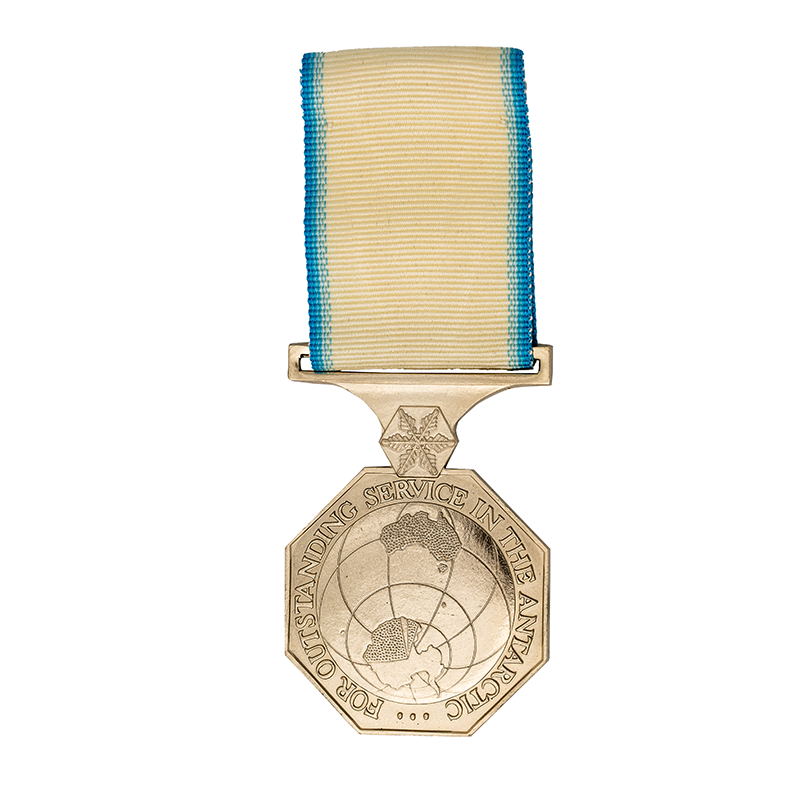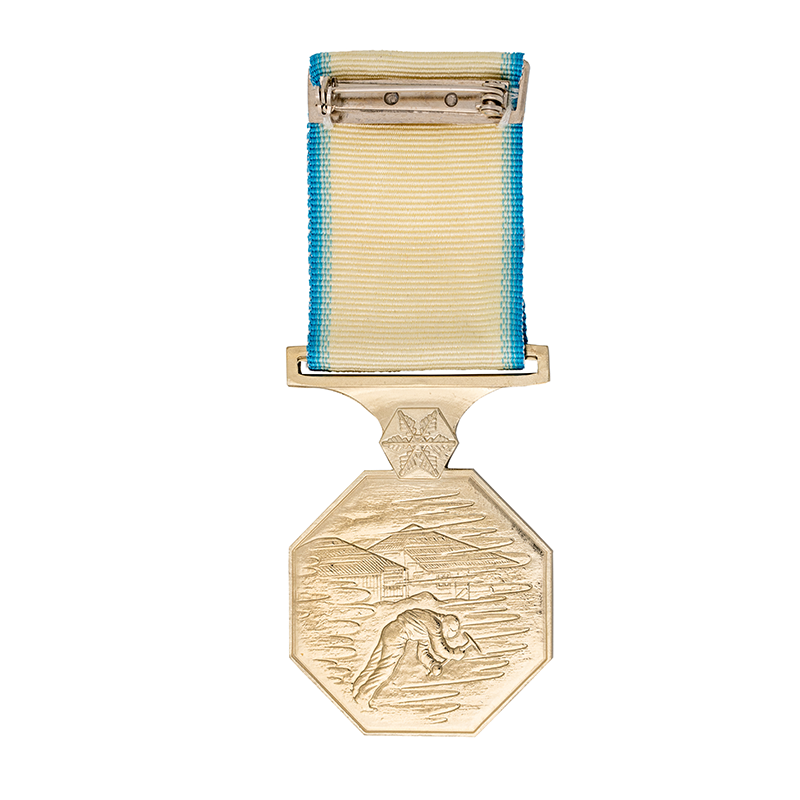

How it is awarded
The Governor-General awards the Australian Antarctic Medal on recommendation from the Australian Government Minister responsible for the Antarctic Territory.
Unless there are exceptional circumstances recipients of the medal have worked in the Antarctic region for 12 months or more.
The medal may be awarded to people who are not Australian citizens but have given outstanding support to Australia’s Antarctic endeavours.
The medal may also be awarded posthumously.
Announcements are made on 21 June in a special Midwinter’s Day honours list as a day of traditional significance for Antarctic expeditioners.
Recipients are entitled to the post-nominal AAM. A clasp to the medal is awarded for further outstanding service.
History
Australia has been involved in scientific exploration of Antarctica since the expeditions led by Sir Douglas Mawson in 1911-1914. The Australian Antarctic Territory was declared in 1933.
The Australian Antarctic Medal was established on 2 June 1987 by Letters Patent. The medal replaced the British Polar Medal and its variations which date back to 1857.
Medal design
The Australian Antarctic Medal is an octagonal nickel-silver medal ensigned with a hexagonal ice-crystal device which links the medal to the suspension bar.
The obverse depicts the Southern Hemisphere showing Australia and the Antarctic enclosed by the inscription ‘For Outstanding Service in the Antarctic’.
The reverse of the medal shows an Antarctic expeditioner leaning into a blizzard to use an ice-axe outside Mawson’s hut. The ice-crystal device is repeated on the reverse of the medal.
Medal Ribbon
The 32 millimetre-wide ribbon is snow-white moiré. At the edges three shades of blue merge into the white.
